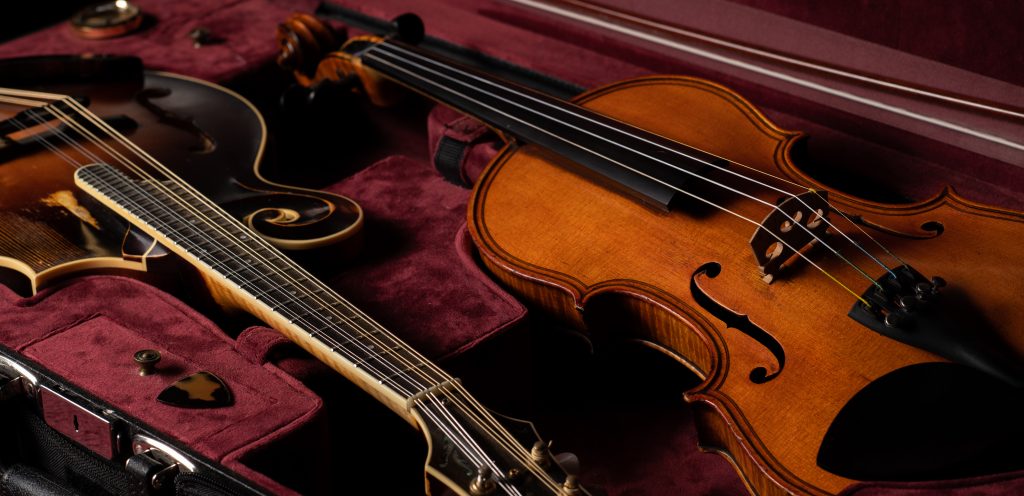Easing Into The New Year
[ theme music & intro ]
How ironic, that sometimes the harder we push to get somewhere, the harder it is to get there and the longer it takes. That’s especially ironic since all we’d have to do is relax and let go and then watch as things naturally unfold.
Join me this week as we consider five simple ways of easing into the new year in just the right ways and in just the right places and at just the right times. The results can be so rewarding.
[ brief pause as theme music fades ]
In the spirit of making things easier, not harder, here are five considerations for living well during the coming year.

photo: Scott Lennox
Step One: Slowing Ourselves Down
Several years ago, a friend who is an accomplished classical guitarist and teacher was generous enough to help me with a piece of music I composed for an upcoming performance. In the middle of the piece, I showed him that I was having trouble getting my fingers into the right places quickly enough. He suggested that I slow down right before coming to that passage.
“If you want to play faster,” he said, “slow down.”
A bit confused, I shook my head but did what he suggested. To my amazement, when I relaxed my left hand and slowed it down as I came to that part of the music again, my fingers fell right into place. He smiled as I realized that for the decades, I’d been adding unnecessary pressure to myself instead of easing my way into what I wanted to play.
This is a great metaphor for allowing ourselves to relax and let go of the old year and move gently into the one ahead of us. To help that happen, it might be a good idea to breathe out softly and release the internal pressure you’ve been holding.
[ brief pause ]
Step Two: Understanding the Situation
A recent article in The Guardian quoted the president of England’s Royal College of Psychiatrists as saying that Covid presents “the biggest hit to mental health since the second world war” and that the effects of it will be felt long after the pandemic ends.
As a mental health professional, I have no doubt that what’s been happening and will continue to happen are affecting us in more ways than we can yet determine. Years from now, when researches look back at our time, they’ll find the human toll to have been staggering.
As I record this, it’s been announced that a more contagious variant of the virus has been found in several places here in the United States and is expected to spread quickly. But that doesn’t call for panic. Instead, it reminds us to pay even closer attention to protecting ourselves and others with safe practices. We can worry about what “could be,” or we can move fluidly with “what is.”
[ brief pause ]
Step Three: Living In the Here and Now
Think about some of the ways fear and anxiety and depression lock us up mentally, emotionally, and even physically. They narrow our perception. They skew our ability to make healthy decisions. They generate increased thoughts and feelings of hopelessness. And if left unchecked, they blind us to what’s real in the moment.
These are some of the reasons I repeatedly remind people to pause and gently shift from what I call “nowhere” thinking to the slow-breathing vitality of “now—here.” Draw a vertical line between the third and fourth letters of the word “nowhere” and you’re looking at “now” and “here,” which happens to be the only time and the only place any of us have ever actually lived.
Each time we quietly return to the here and now—the living present—we allow clarity to arise and our emotions self-regulate at a more effective level.
When that happens, we’re able to see that we have more options open to us than we were aware of when we were feeling depressed or anxious or scared. As we become intentionally clearer, the options in us and around us don’t change; we do. By coming back to the present, our ability to perceive opens again and we find ourselves much more in control of our lives.
[ brief pause ]
Step Four: Balancing Movement and Rest
During the past few months, people have been telling me that they “feel tired all the time,” that they’re “taking more naps than before,” and that they “just want to wake up when the pandemic is over.” While I’m a longstanding advocate of giving ourselves the rest we need, it’s clear that when rest and physical movement get out of balance, we can feel even more fatigued.
The popular myth that “sitting is the new smoking” has long been debunked. There’s no question that smoking is much more deadly than being overly sedentary. Yet becoming overly sedentary comes at a risk. We need to be moving to stay healthy, even if it’s a few minutes a day on the treadmill or jumping rope or walking around the block or dancing in your living room.
My work as a counselor has me necessarily sitting for hours every day. I’ve noticed that if I don’t get up and move around between sessions, doing some stretches and jumping rope for a few minutes, I feel drained at the end of the day. Burt when I pepper my day with movement, I feel much less fatigued, my head is clearer, and I sleep better. That part alone is worth the effort.
[ brief pause ]
And finally, Step Five: Embracing Joy
It seemed such a simple thing, but when I moved my dog’s mat next to the chair at my writing table, it lit me up. I smile knowing that he’s right here beside me. The same thing happens when I look at the flowers on my desk or play the fiddle for a few minutes or stop to watch the birds in the garden beyond my window.
We can find little joys everywhere if we’re willing to look for them and notice them. Our word “joy” comes from ancient Sanskrit and means “play.” What happens when you allow yourself to be a little less rigid and a bit more playful? If we were to do brain scans, first in your rigid state and later as you were being playful or noticing something joyful, we’d see some of the darkened parts of your brain light up with higher levels of activity as you’re in your more joyful state.
I remember a picture I took of two soldiers on a firebase in Vietnam. Grinning at me from a giant seesaw they made from an upturned piece of corrugated metal, one of them is high in the air and flashing the peace sign with his feet kicked out in front of him. Even in the middle of war, there are joys to be found if we’re willing to look for them or create them. Certainly, we can do that now.
But don’t work at it. Make a game of finding joy wherever you are.
[ brief pause ]
This week’s two Beautiful Questions are designed to help you be successful in reaching your personal goals for 2021.
Question One: What is your vision of yourself in the new year? As the new year unfolds, how do you see yourself in it?
Question Two: From within yourself, not from outside you or around you, what changes will you make to bring your vision into reality?
As always, I would love to hear about your decisions and how you carry them out. Write and tell me about them.
As I say each week,
My Light with Your Light
[ theme music rises ]
As we step into the new year, I am so grateful that we are connected in this way and renew my commitment to listening even more deeply to what is relevant for all of us. Thank you for joining me in these podcasts as we do what we can to respond to life in more effective ways.
[ brief pause ]
I’m Scott Lennox, and this has been The Beautiful Question.
